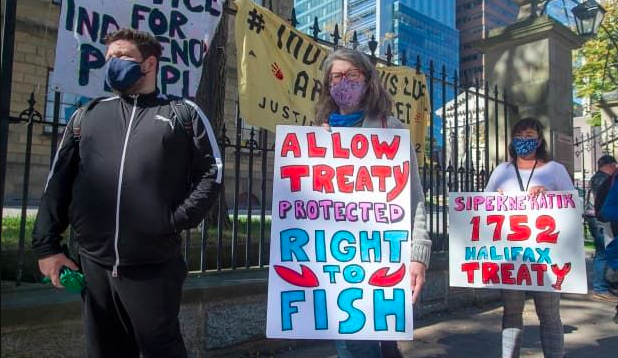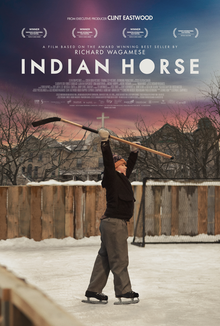Indigenous Representation Is Needed
- Consensual Humans

- Dec 21, 2020
- 3 min read
Updated: Feb 22, 2021
Jessica Somersall
As I am writing this article, I am situated on the lands of the Huron-Wendat, Haudenosaunee, and Anishinaabe peoples. Identifying and recognizing the lands that you are currently situated on is important because the lands were taken by the colonizer and you are acknowledging what was taken from Indigenous peoples. The depiction of Indigenous peoples in movies and film history is filled with prejudices, discrimination, and caricatures that are not apart of Indigenous identity. As an ally, the narratives that films paint of indigeniety is one that is rooted in the idea of the “Other”; an idea that has been plaguing the Indigenous communities since colonization.
That is why there is a need for representation of Indigenous peoples in film and movies, because it is important to be able to see what Indigenous peoples have been through in order to understand how to be an ally. Although, it is not the responsibility of Indigenous peoples to educate us on their history; that is something that you as an ally need to do. The revictimization of Indigenous peoples is prevalent when discussing injustice done to Indigenous peoples, and their resources are limited.
For example, right now in Halifax, Nova Scotia, there is a big dispute over Indigenous fishermen and non-Indigenous fishermen over lobster fishing. On September 17th, the Sipekne’katik First Nation launched its own Mi’kmaq-regulated rights allowing them to fish in the off-season. How this all started: the Mi’kmaq, Wolastoqiyik and Passamaquoddy peoples have an old treaty set up by the British government, before the early makings of Canada. This treaty is called The Peace and Friendship Treaty of 1752, which is supposed to be a peace treaty between Canada’s government and Indigenous peoples. There are certain guidelines that Indigenous peoples were gifted because of the colonization of their lands. But Canada’s government did not honour their agreements, which created a sore relationship. Specifically, the treaty allows for the Mi’kmaq, Maliseet, and Passamaquoddy to hunt, fish, and gather towards earning a moderate livelihood.
However, some non-Indigenous peoples believe the treaty is unfair or special treatment. There have been attacks on indigenous fisheries and harassment on costumers purchasing from Indigenous fisheries, done by non-Indigenous fishers. This idea that Indigenous peoples get “special treatment” from the government is false: Indigenous peoples have endured racial and discriminatory genocide on their lands for many years, years older than Canada itself. The generational trauma that Canada has caused Indigenous peoples is what Canada is trying to make up for, but not doing enough. To make matters more intense, the RCMP is not doing anything to rectify or stop harassment of the Indigenous fishermen. Indigenous peoples make up 35% of Canada’s prison system, but the percentage of Canada’s population that is Indigenous is only 4.9%.

A great depiction of the generational trauma that Indigenous peoples had to endure is from the movie Indian Horse, which is based on the book Indian Horse by Richard Wagamese. The book is made in English and Ojibwe language because the protagonist, Saul Indian Horse, is from the Ojibwe and Anishinaabe peoples. The movie follows Saul, who is taken to a residential school after his grandma dies trying to get to her familiar tribe. There Saul and other Indigenous children are subjected to the horrors that the Catholic Church and Canada’s government is allowing. Residential schools were sectioned by Canada and the Catholic Church to strip and brainwash Indigenous children to submit to the “Canadian way” of living. This entailed torture, forcing the children to leave behind their ancestorial tongue, forcing English, forcing Christianity, and so many other cruel and inhuman conditions forced on Indigenous children. This is after the kids were taken from their homes and forced into this system. The movies do a good job of depicting these horrors, but a trigger warning: it is explicit. Saul picks up a liking to hockey, which he has a natural talent for. Saul works hard to get on the ice, and you can tell he was born to be a hockey player. Without giving too much of the movie away, Saul is faced with so much prejudice and discrimination that he questions his love for the sport.
The discrimination of Indigenous peoples is a long painful history that needs to be mended by Canada’s government, Canadian citizens, and anybody who views themselves as an ally. The generational injustices have caused the issues, abandonment, and displacement of Indigenous peoples, and they need justice. That is why it is important to have Indigenous representation in film and theatre, because there is an aspect of humanity and humanization that is missing. This is the Indigenous perspective, which is a unique spectacle that is specific to Indigenous peoples. As an ally, we need to use our platforms and dismantle rhetoric that endangers the Indigenous community.
Ally Resources
10 Ways to be a Genuine Ally: https://www.amnesty.org.au/10-ways-to-be-an-ally-to-indigenous-communities/
How to be an Ally to Indigenous Peoples: https://www.queensu.ca/indigenous/sites/webpublish.queensu.ca.oiiwww/files/files/How%20to%20be%20an%20Ally.pdf
Queen's Four Directions Community Resources: https://www.queensu.ca/fourdirections/resources-queens-community
Sources
https://www.theglobeandmail.com/canada/article-mikmaq-fisheries-nova-scotia-treaty-rights-explainer/














Comments